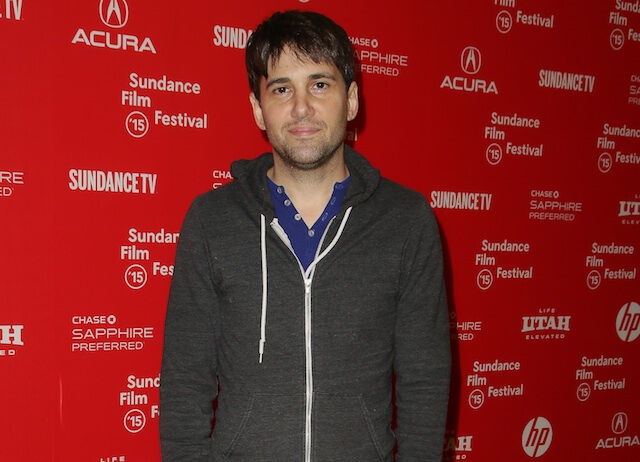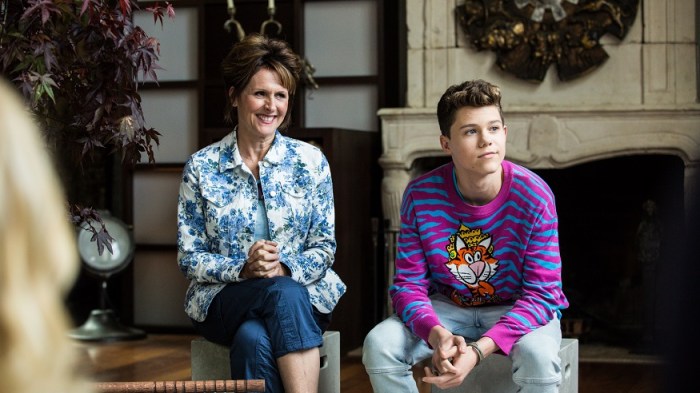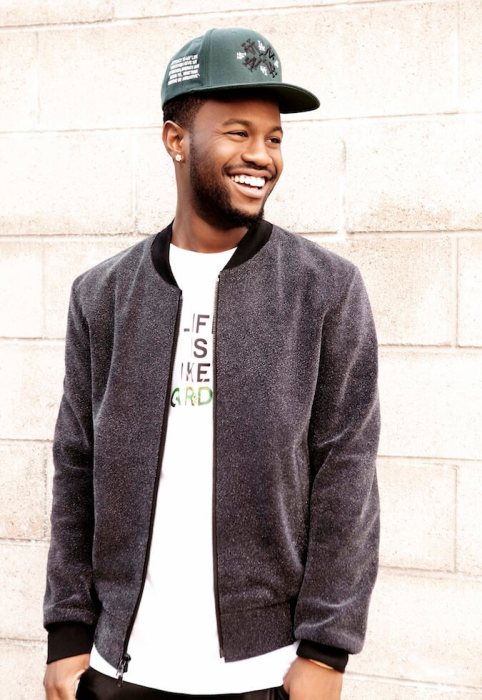The indie horror “It Follows,” like “The Babadook” last year, is being hailed as a genuinely terrifying antidote to bigger budgeted couterparts, like “Ouija.” But its writer-director, David Robert Mitchell, doesn’t come from the genre. His last film was 2010’s “The Myth of the American Sleeper,” a tiny, sensitive “American Graffiti”-type teen movie. “It Follows” at times feels like that movie, with a 19-year-old (Maika Monroe) finding that, after sleeping with the guy she’s been seeing, she’s been gifted a strange curse: she will be followed by mysterious creatures visible only to her, who take on the form of regular people and will kill her if they ever catch her. Let’s get this out of the way: Some people have read this along the lines of old slasher movies, in which sex equals death. Your version doesn’t seem to cut and dry, though.
I hope it goes beyond that. The characters certainly open themselves up to danger through sex. But sex is also a way in which they can be temporarily freed. It’s not so simple. To me, it’s not literally about sex. It’s about life in general, sex being a very important part of that. By the act of living we are in danger. We all live with the idea of mortality in the back of our mind, not knowing how long we’re here for. At a certain point you become more aware of that. And there is a direct to awareness of sexuality and awareness of mortality. Sex and love are ways in which we can push death away, at least for a moment. It’s a way of living in the moment. Jay also doesn’t just sleep around. She sleeps with someone she’s been seeing.
Yeah, she cares about this person. Some people have read it as though that’s the first time she’s had sex. I don’t see that either. For me it’s not about demonizing sex, or some kind of puritanical statement, as some people have said. Everyone has the right to think what they want about the film; I don’t know how much my intentions matter. But it is interesting to see different reads on the movie. Horror films tend to create all kinds of responses. It’s a genre that, moreso than respectable fare, really allows for unique and even transgressive ideas.
Audiences for horror films tend to allow filmmakers to be a little more experimental. You can get away with more than with other genres. You can do things that would irritate an audience or some people within other genres. Horror audiences are very open-minded. Speaking of which, this film will soon wind up on VOD. But it seems the ideal way to experience it is in a theater.
That’s the way to see it. So much of the film is in wide-angle shots. It’s not relying on close-ups. Close-ups in films that are constructed around tighter shots play well when watched on an iPad or something. You can watch this that way, but to really feel the film, you need a large screen. It’s supposed to be immersive. We tried to shoot it in a way that you actually feel physically placed within these environments. You can look in the distance, you can look at the edges of frames. You’re scanning the frames, looking out for the characters, looking out for yourself. It’s supposed to be experiential. You’re not going to get that as much if you watch it on a small screen. And the music — you want the sound cranked up. The amount of 360 pan shots and care around the frames looks time-consuming. Was “The Myth of the American Sleepover” all that easier, though?
Well, they’re all really damn hard. [“Myth”] was hard. We had no money and a huge cast of mostly first-time actors — high school and college kids acting for the first time. And we had no money. And a million locations. And mostly filming at night. This was also really hard. I had a little more money; I was able to be more bold in terms of camerawork. I wanted this film to be a little more deliberate and precise. I had just enough money to get a little closer to that. It was very ambitious for what we had to work with. And really hard. There’s a lot made about how films are easier and more inexpensive than they’ve ever been. That seems like it might be overstated.
I’ve heard people say that, but ultimately it still costs money. If people are able to make low budget films look good, it’s usually because they’re sacrificing in some way that is not seen. Somebody or some people are killing themselves or selling a part of their soul to make that happen. There’s no money in independent films at this point. It’s probably worse than it’s ever been in terms of money. Even though the technology is better, it’s still tough. When the characters aren’t fleeing from a mysterious pursuer, the film hangs with them and it has the same quiet, laidback vibe as “Myth.”
When I wrote this I had just done “Myth.” I thought it’d be fun to take that idea and imagine a character from that world as a little bit older, then just throw them into a nightmare. The film is very much about waiting — about waiting for something to happen. It’s about anxiety, about the middle spaces, where these characters are interacting in a normal way that could come straight from the other film, then they’re waiting for something horrific to happen. The moments of attack are very different, but the moments in between are very similar. When filmmakers make films about youth, especially if they’re older, it seems like they’re trying to recapture a feeling, if not their actual youth.
These films I’m making about that age are not really that representative of my own youth. It’s an imaginary space.
If I had to relive my youth that would be awful.
That’s the thing: I don’t want to actually go back to that time. No way.
Follow Matt Prigge on Twitter @mattprigge
Interview: David Robert Mitchell wants you to see ‘It Follows’ on the big screen

Getty Images















